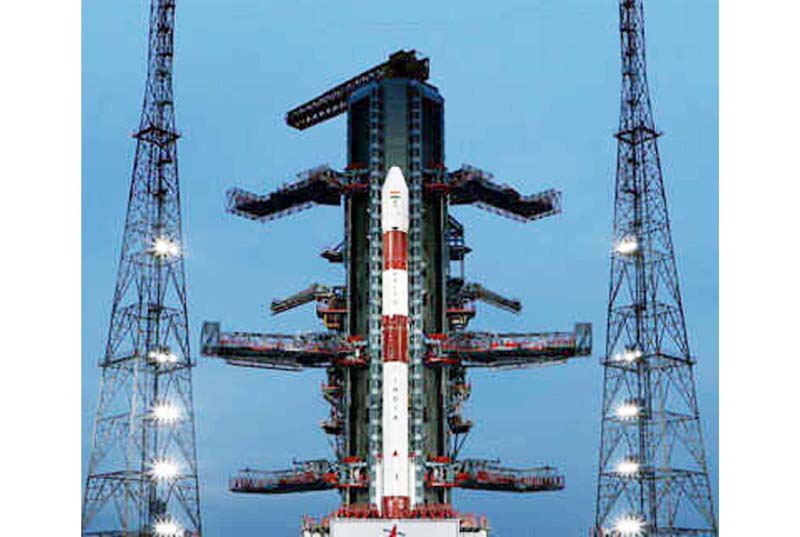CHENNAI, Aug 6: The Indian Space programme will herald yet another milestone when the maiden flight of the Small Satellite Launch Vehicle (SSLV), which will ferry Earth Observation Satellite-2 (EOS-2) and a co-passenger satellite AzaadiSAT into a Low Earth Orbit, will take place tomorrow from the spaceport of Sriharikota.
The Indian Space Reserach Organisation (ISRO) today said the launch of SSLV-D1 (first developmental flight) carrying the 142 kg EOS-02, equipped with an infrared camera with six metre resolution, and a micro satellite will take place from the First Launch Pad at the Satish Dhawan Space Centre (SDSC), SHAR Range, Sriharikota, at 0918 hrs.
The countdown for the SSLV-D1/EOS-02 mission will commence about six-and-half- hours before the lift off, ISRO sources said.
During the countdown, propellant filling operations will be carried out in the 34 m tall, three-stage vehicle (all solid propulsion stages), which has a lift off mass of 120 tonnes, and all the rocket and satellite systems will be checked.
The satellite insertion into the intended orbit will be achieved through a liquid propulsion-based Velocity Trimming Module (VTM).
During the nearly 13 minute flight duration, the rocket will coast (will not be powered by engines), twice for about four minutes during the separation of the second and third stage and maintain its velocity using the thrust developed from the lift off.
About 742 seconds after the lift off, SSLV will inject the EOS-2 at an altitude of 356.30 km with an inclination of 37.21 deg to the equator. It will be followed by the separation and injection of AzaadiSAT about 50 seconds later.
SSLV is the new launch vehicle of ISRO capable of launching Mini, Micro or Nano satellites (10 to 500 kg mass) to 500 km planar orbit.
The design drivers of SSLV are low cost, low turnaround time, flexibility in accommodating multiple satellites, launch-on-demand feasibility, minimal launch infrastructure requirements etc.
EOS-02 is an experimental optical remote sensing satellite with a high spatial resolution. The objective is to realise and fly an experimental imaging satellite with a short turn-around time and to demonstrate launch on demand capability.
EOS-02 belongs to microsatellite series of spacecrafts. The bus configuration was derived from IMS-1 bus.
The mission objective of EOS-02 was to design and development of an agile and experimental satellite with an imaging payload, besides providing inputs on thermal anomalies towards supporting applications in the domains of geo-environmental studies, forestry, hydrology, agriculture, soil, coastal studies, etc.
New technologies realised for the microsat series of spacecrafts include payloads with a common fore optics and metallic primary mirror realised with the limited mass and volume of Microsat Bus.
The 8 kg AzaadiSat is a 8U Cubesat. It carries 75 different payloads each weighing around 50 grams and conducting femto-experiments.
Girl students from rural regions across the country were provided guidance to build these payloads, which ware integrated by the students team of Space Kidz India.
The payloads include a UHF-VHF Transponder working in Ham radio frequency to enable voice and data transmission for amateur radio operators, a solid state PIN diode-based Radiation counter to measure the ionising radiation in its orbit, a long range transponder and a selfie camera. (PTI)
The ground system developed by Space Kidz India will be utilised for receiving the data from this satellite.
It was built by 750 girl students of government schools, thanks to the initiative by Spacekidz India, to commemorate the 75th anniversary of Indian Independence– Azaadi Ka Amrit Mahotsav.
According to SpaceKidz India, 10 girl students each from 75 Government schools across India were selected for this project. The selected students were from Classes 8 to12.
This is a first of its kind space mission with an ‘All women concept’ to promote Women in STEM as this year’s UN theme is women in space, SpaceKidz India said.
NITI Aayog has partnered for this project to bring this opportunity to the Government school girl student across India and Hexaware is funding the project.
SSLV will be ISRO’s third launch vehicle, adding to its versatile and the workhorse PSLV and the heavy vehicle launcher GSLV. (UNI)
Trending Now
E-Paper


